New Boston Historical Society
New Boston, New Hampshire
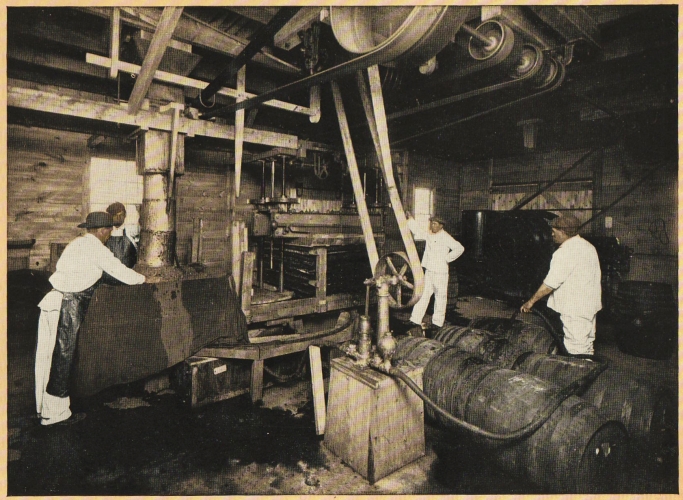
Cider press in the 1908 mill, from "About the Farm"
The Cider Mill
The Cider Mill on the Francestown Road (Route 136) just above High Street was until recently the last New Boston mill still in operation. Owners Eileen and Bob Belanger and their friends pressed apples every Columbus Day weekend to make sweet cider for visitors.
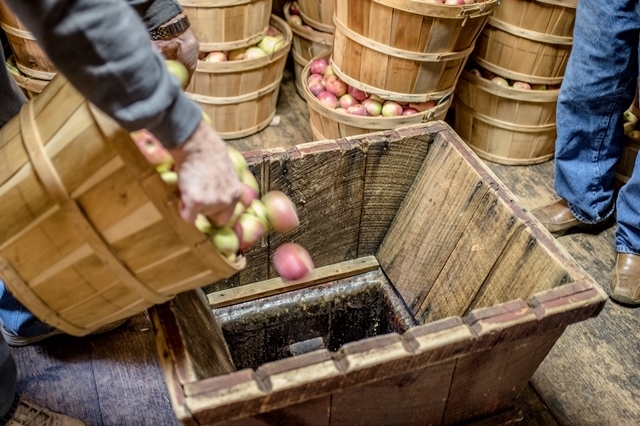
(Photos by Mary Weiss)
Bob Belanger wrote: "The design of the mill makes it well suited for its intended purpose. Built into an embankment on top of which runs a road, the building has one story on top of the hill and two on the bottom. On the first floor there is a large storage room with rows of charcoaled barrels. Thick stone walls and the insulation of the embankment keep the temperature of this room within a constant range throughout the year. This cool, moist environment is ideal to support the slow, natual aging that is necessary to properly ferment cider into vinegar."
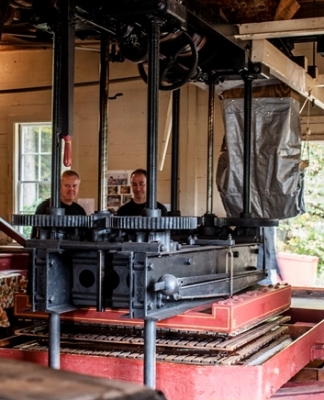

"The apples are turned through a hole in the floor into a grinder, and the ground apples then drop to the cider press. The men while at work wear clean white suits, and every care is taken to have a product free from any impurity. The cider is stored in barrels for about two years. It is then turned into large vats, and in three years from the time of making is clear pure vinegar."
Oliver Dodge reminisced about the Valley View Farm in a 1991 interview by John Bunting. When talking about the cider mill, he remembered that "Most of the apples were brought in from people all around town. Everyone had a few apple trees, years ago. Every farm had apples all around the walls and fields. They thought they couldn't live if they didn't have about so many apple trees."
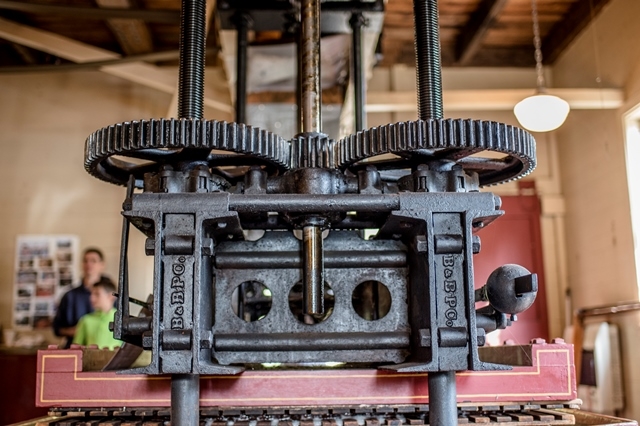

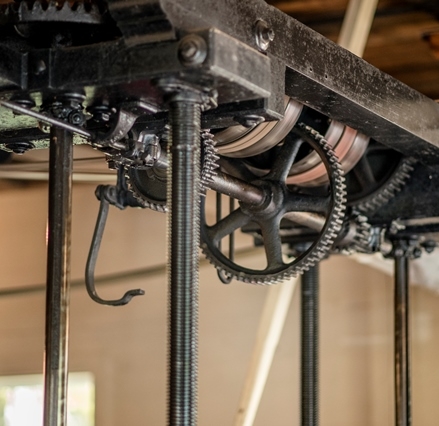
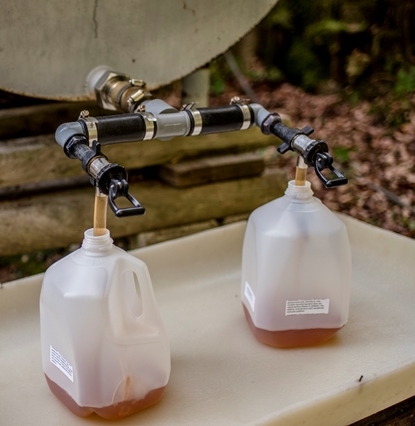
Paul Saltmarsh (1894-1973) operated the cider mill from 1936 until he died, first renting it from Constance Fitzgerald, then buying it in 1944. In addition to cider and vinegar, Paul was famous for his apple syrup, that he and his wife Ruth made from apple juice and "secret ingredients", which they boiled down to syrup consistency, bottled, and sold nationwide. David Stanford remembers that Paul "would tip dumptruck-loads of Macintosh apples, with leaves, bugs and stems for added panache, and out streamed the greatest apple juice I ever had."
Bob bought the mill in 1974, and he married Eileen a few years later. At the time they made organic cider vinegar which they sold to health food stores; they still have some vinegar for sale today, aged for 18 years. By 2018 the apple press was used just one weekend a year, and the sweet cider it made was sold to benefit the Community Church Food Pantry. Eileen says it's the old Boomer & Boschert press which makes the cider so clear and good - "like biting into an apple!" She believes that modern machines over-press the apples, resulting in cloudy cider.
Today the 1908 mill is the home of the Cider Mill Gallery, where Eileen Belanger teaches art classes.
For more information:
Bob Todd wrote a wonderful description of how the cider press operates, which you may read here.
After you read Bob's article you'll want to watch a 3-minute video of the cider press in action:
• Edward Newton Colburn wrote about making apple cider in the early 1900s.
• Click here to read a PDF transcript of John & Rita Young's presentation about Mapadot's, the last of New Boston's apple orchards.
